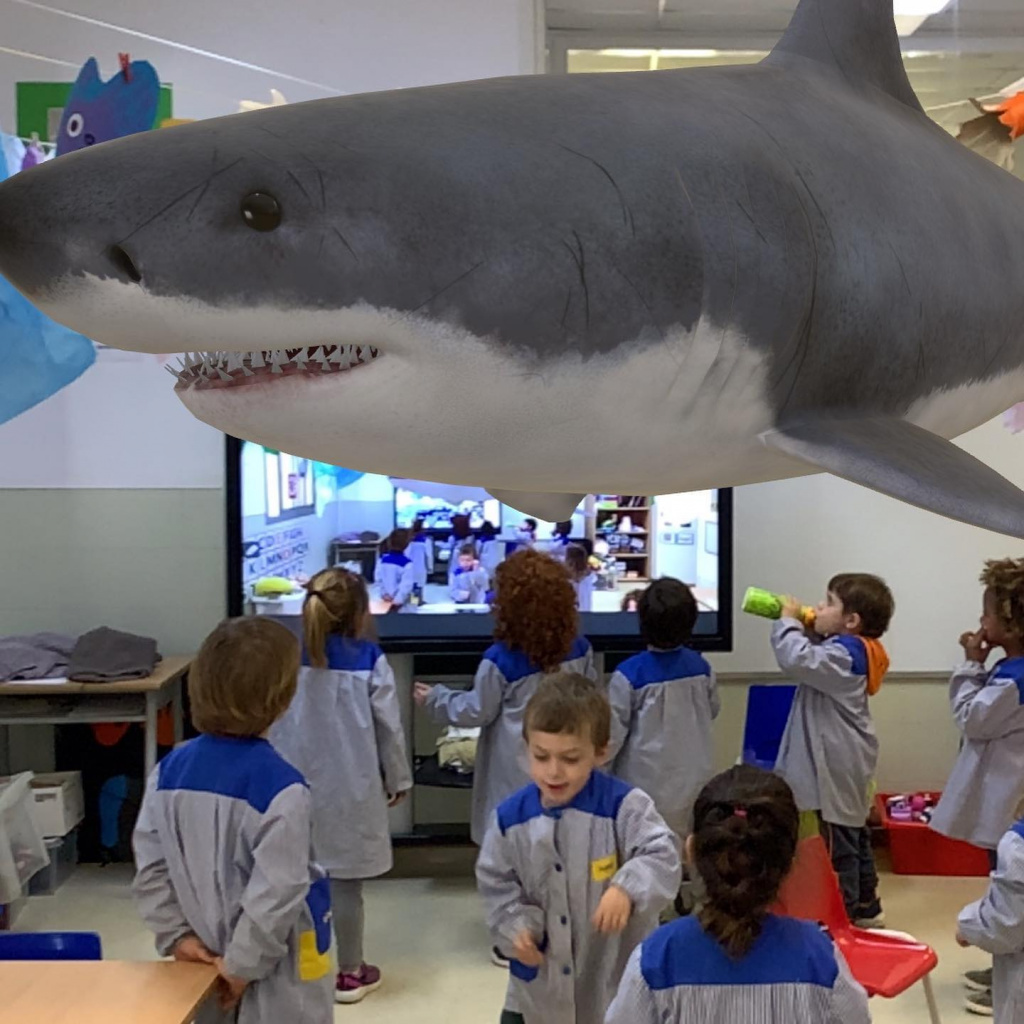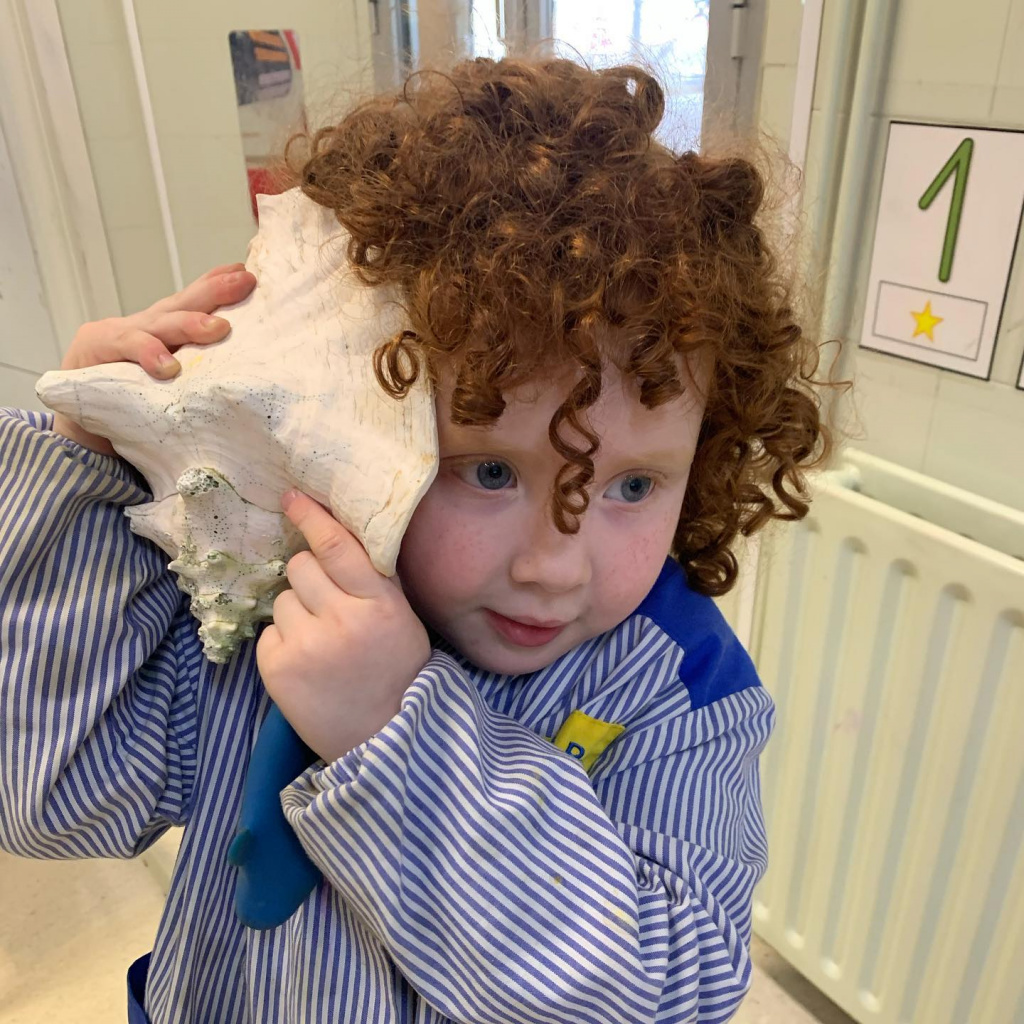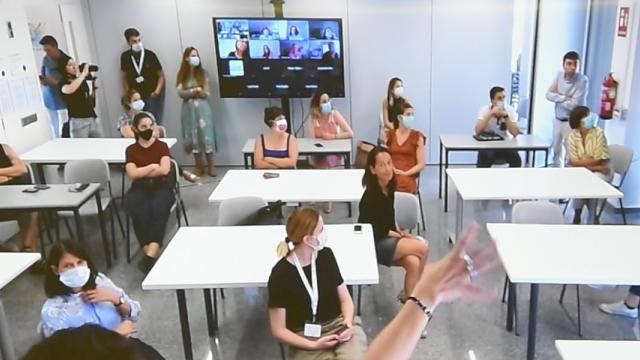Du Street Art à Kerplouz !
La foule des grands jours à la cafétéria/distributeur de boissons des élèves. Une promotion sur le chocolat ? Un supplément chantilly gratuit pour le café ? Pas du tout. Simplement des élèves curieux de regarder un groupe d’étudiants de BTS AP1 réaliser une fresque picturale. Dans le cadre du PIC (projet d’initiative et de communication), Baptiste Lagrange et ses camarades Elouan Doré et Lucas Lame ont imaginé, planifié et organisé ce projet artistique. Solidarité, santé, paysage et environnement sont les mots clés qui caractérisent ce graffiti. « Trop stylé » semble aussi être l’expression qui résume bien le sentiment des élèves, spectateurs privilégiés de cette création diffusée en direct sur les réseaux sociaux. Le Louvre n’a qu’à bien se tenir !
La Salle Cassà de la Selva-Treballem per projectes
El treball per projectes és una eina ideal per a desenvolupar aprenentatges significatius. A través de diferents activitats pensades per treballar de manera motivadora, cooperativa i vivencial, els nens i nenes aprenen a aprendre i a autoregular tot el procés. A les fotografies el projecte d’educació infantil:El mar.



Rubén Aldás, artista solidario, deportista y alumno de La Salle Paterna, realiza una donación a la Fundación La Salle Acoge

Rubén Aldás, artista solidario, deportista y alumno de La Salle Paterna, es un ejemplo en todos los sentidos positivos que alguien pueda imaginar: afán de superación inquebrantable, solidario, deportista, amigo de sus amigos…. un ejemplo para todos los que lo conocen.
Rubén, tal y como ya realizara el año pasado, con motivo de su cumpleaños, ha decidido hacer una donación solidaria a favor de la Fundación La Salle Acoge. Este año, Rubén ha decidido donar a la Fundación todo el dinero recaudado con la venta de los cuadros que pinta.
Rubén Aldás es alumno de la ESO en el Colegio La Salle de Paterna. Lleva prácticamente pintando toda la etapa de la ESO en la asignatura de Educación Plástica y Visual y en todos los momentos que le deja su vida llena de actividades.
Las obras pictóricas de Rubén son muy evocadoras y bonitas, con un particular uso del color que entra por los ojos a primera vista.
En el acto de entrega del dinero que ha recaudado por la venta de sus pinturas han estado presentes, junto a Rubén, Joana Maria Cunill, directora de la Red de Obras La Salle Valencia-Palma, y Fernando Royo, responsable de la Fundación La Salle Acoge.
Queremos agradecer a Rubén su inmensa solidaridad, el ejemplo que es para todos los que le conocen y esa sonrisa que siempre le acompaña donde quiera que va.
La Salle Campus Barcelona’s Smart Learning Model Delivers Personalized Education With Zoom Rooms

La Salle-Ramon Llull University in Barcelona reacted quickly to move classes online at the onset of the COVID-19 pandemic. As the months went on and the situation remained uncertain, school leaders saw an opportunity to bring greater flexibility to education through a hybrid learning model La Salle calls Smart Learning.
During the summer of 2020, La Salle deployed Zoom Rooms in more than 60 classrooms on the Barcelona campus, creating smart classrooms for hybrid instruction. La Salle instructors use Zoom Meetings to weave Smart Learning into the educational experience.
La Salle’s Zoom Rooms-enabled classrooms allow students to personalize their education through in-person or remote learning. Check out the highlights below, or read our full case study for more detail.
A look at La Salle’s smart classrooms
La Salle’s Zoom Rooms classrooms are designed for ease of use and engagement with students in person and online. Smart classrooms have the following features:
- Multiple displays showing the active speaker (whether a professor or student is speaking), remote students, and an interactive digital whiteboard that gives professors and students the ability to co-annotate, save, and send content
- A sound system with microphones and speakers so students at home can clearly hear what’s going on in class and communicate with their peers and professor
- Cameras with auto-framing capabilities that track faculty members’ movements, allowing them to move around the room and lead more dynamic lessons
“We decided Zoom was the best option because of the easy, intuitive way to use the technology in the classroom,” said Josep Maria Ribes, director of academic affairs at La Salle.
A flexible, personalized educational experience
Many of La Salle’s international students found themselves unable to travel back to campus for in-person learning for many months during the pandemic. Zoom provided a way for students to continue their education and connect with their classmates.
“Zoom has given us what we need to provide business continuity and enable student resilience,” Ribes said.
As more students return to campus, smart classrooms support a hybrid model that offers flexibility. “Students can decide what they prefer, and the experience is almost the same being here as being at home,” Ribes said.
“We have to understand the needs of our students and the new market. People are changing, and ways of learning are changing,” said Maria Pilar Torné, La Salle’s marketing and admissions director. “We’re working to understand this change and looking at offering programs that are on campus but give students the flexibility to learn off campus.”
Download the case study for more on La Salle’s smart classrooms and how the university uses Zoom to support learning, communication, and community connection.
Blog www.blog.zoom.us
